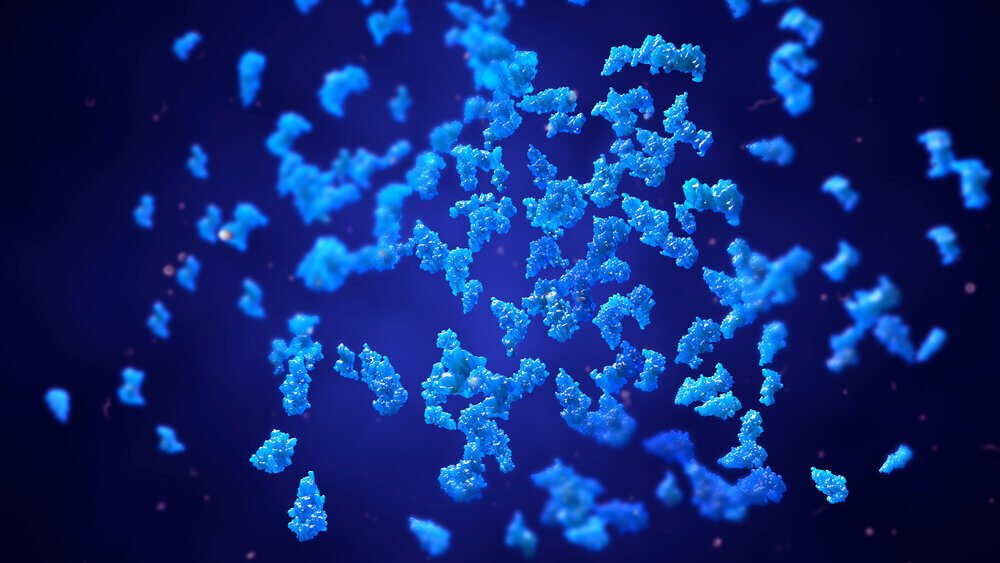Monoclonal Antibody (mAb) Aggregates: When do they form?
In our second post on monoclonal antibody (mAb) aggregates, we’ve collected some more details about how and under what conditions mAbs may aggregate. We hope these facts will be helpful to scientists who are concerned about aggregate formation.
mAb aggregation can occur due to both intrinsic and extrinsic factors. Intrinsic factors are those related to the specific protein sequence and structure or chemical and physical properties. Extrinsic factors are those resulting from the handling, processing, or storage of the protein.¹
An improperly or non-natively folded protein can expose hydrophobic regions, which can facilitate aggregation.¹,²
Improper folding can occur in the cell culture from high protein concentration, high temperature, components of the culture medium, or incomplete disulfide bond formation due to an insufficiently oxidative environment.²
The presence of certain metal ions, such as copper and iron, can affect disulfide bond formation.1 The result can be positive or negative, depending on the specific situation.
Shear stress during centrifugation, microfiltration, or agitation can cause aggregation.²
Low pH can induce structural and physicochemical property changes that result in aggregation. Common purification processes involving potentially hazardous low pH are Protein A elution and viral inactivation steps.² Additives such as urea, glycerol, sucrose, or arginine are sometimes used in these steps to prevent aggregation.¹
Surfactant additives are sometimes used to prevent aggregation when the protein concentration is high.¹
Aggregation occurs more rapidly at high ionic strength than low ionic strength.²
It has been found that amino acid sequences that are high in glutamine, asparagine, hydrophobic, or aromatic residues are prone to aggregation.¹
Sequences high in charged residues such as aspartic acid, glutamic acid, lysine, arginine, and histidine are less likely to aggregate.¹
Bind-elute cation-exchange chromatography (CEX) and hydrophobic interaction chromatography (HIC) are common methods of removing aggregates.³ However, the high protein and salt concentrations during elution may result in aggregation.⁴
On-column aggregation is also possible. This can be due to conformation changes during binding, interactions between the mAb and the chromatographic media, or self-association between mAbs. Properties of the media, such as ligand structure, ligand spacer, ligand density, pore size, and pore size can influence on-column aggregate formation.⁴
A benefit of high-speed membrane chromatography could be that shorter residence time can reduce on-column aggregation. Purilogics’ multimodal anion-exchange membrane, Purexa™ MQ, can be a powerful tool for aggregates removal, since it can separate species based on both charge and hydrophobic interactions. Purexa™ MQ, has been shown to be effective in removal of aggregates from commercial mAb streams.⁵
NOTE: Purilogics Purexa™ MQ is able to remove aggregates significantly.
Please read our two relevant posts reporting case studies.
1) Aggregates and HCP removal from an acid mAb feed;
2) Aggregates and HCP removal from a basic mAb feed.
References:
1. Zang, L.; Yi, Y. Factors Influencing Biotherapeutic Monoclonal Antibody Aggregation, American Pharmaceutical Review (2018).
2. Joshi, V.; Yadav, N.; Rathore, R. S. Aggregation of Monoclonal Antibody Products: Formation and Removal, BioPharm International, 26, 3 (2013).
3. Evans, W. Removing Aggregates in Monoclonal Antibody Purification, Pharmaceutical Technology, 39, 3 (2015).
4. Carta, G.; Khandelwal, P.; Snyder, M. Minimizing On-Column Monoclonal Antibody Aggregate Formation. Bioradiations (2018).
5. Forsythe, A.; Henn, D.; Temples, G.; Zhou, J.; Husson, S.M. Application of novel multimodal anion-exchange membrane chromatography columns in a two-step mAb purification scheme – Aggregates and HCP removal. 257th ACS National Meeting, Orlando, FL (2019).

